
"I know that immortal fame awaits him if his death is recorded by you" Pliny the Younger, Letter to Tacitus about the eruption of Vesuvius,
Rimbaud wonders in his Illuminations: “Can one be in ecstasies over destruction?” 2 Let us return to Being Beauteous, it seems like this poem may have been written with the destiny of Pompeii in mind, a Roman site destroyed in the year 79 by the fatal eruption of Vesuvius, a natural cataclysm that paradoxically allowed the birth of one of the most beautiful archeological sites of the world. A site now also home to the National Archaeological Museum of Naples which holds collections of Roman antiquity among the most prestigious today. The destruction of the world is in Rimbaud's poetry the necessary prelude to the advent of a new life: “Whistlings of death and circles of secret music make the adored body, like a specter, rise, expand, and quiver; wounds of black and scarlet burst in the superb flesh. Life’s own colors darken, dance, and drift around the Vision in the making. Shudders rise and rumble, and the delirious savor of these effects clashing with the deadly hissings and the hoarse music that the world, far behind us, hurls at our mother of beauty, she recoils, she rears up. Oh, our bones are clothed with an amorous new body. (...) O the ashy face, the cringe escutcheon, the crystal arms! The cannon on which I am to fall in the melee of trees and of light air!” In Illuminations, Rimbaud wants poetry, which is to say art, to transform life. There can only be true creation after destruction. That is why we can rave about destruction. Can a disaster be a source of artistic creation? If Vesuvius had not covered with its lava the regional capital that was then the city of Pompeii, killing all life but preserving in its ashes the works of art, would we today, twenty centuries later, be witnesses to this spectacular showcase of frescoes and mosaics of sublime beauty? What a strange and frightening paradox to think that the durability of these masterpieces is the direct consequence of a volcanic eruption that decimated in a single day of autumn most of the twenty thousand people who then composed the population of Pompeii and Herculaneum.
Creative Destruction
The project of this exhibition Cai Guo-Qiang and Pompeii: In the Vulcano is born of an awoken dream, a day when I was visiting Naples and was contemplating the Vesuvius from the top of the terrace of San Elmo which dominates the city. Thinking of this paradox of a destructive volcano standing in for the best conservator of Pompeii's heritage, Cai Guo-Qiang’s visage appeared to me clearly. I was thinking of what could be a dialogue between this volcanic artist who imposed his stylistic signature by paintings made with explosive powder, and the legacy of this volcano: Pompeii and its treasures kept at the National Archaeological Museum of Naples. Cai Guo-Qiang was then invested in an ambitious cycle of dialogues with the great artists of the history of Western art who weighed in his formation and coming of age. Pompeii was part of his unconfessed dreams. He immediately accepted my proposal as a sort of natural project he was waiting for. The dialogue with Pompeii, its art and its history, was a necessary and legitimate step. “My works consist of painting an explosion on paper,” 3 explains Cai Guo-Qiang, who, since his life as an expatriate artist in Japan more than thirty years ago, has learned to master the secrets of gunpowder to develop a unique artistic technique which allows him to create from the explosive encounter of colored gunpowder. In Balzac's The Unknown Masterpiece, the
fictional painter Frenhofer is “dead in the night, having burned his paintings.” Diderot argued that destruction is creative, going against the common idea that creation and destruction are antithetical. In his “Salons,” the philosopher imagines the sculpted group of Pygmalion by Falconet to be even more perfect if it had been destroyed in places... A visionary idea that we find in the twentieth century when Fontana lacerates his paintings, or when Miro burns in part its last tables. In her presentation of the exhibition at the Centre Pompidou in 2005, Big Bang: Destruction and Creation in 20th Century Art, Catherine Grenier put forward the hypothesis that the “common denominator of the work of twentieth-century artists as well as our contemporaries, is an impulse rather than a character [...] a paradoxical impulse that closely links two terms: destruction and creation. Because the artists wanted, as Miro said, “to murder painting,” that is to say, to free oneself from academicism and from rules. In this modernist tradition, Cai Guo-Qiang throws gunpowder on the canons of a conceptual contemporary art that has become traditional and academic, and renews with experimentation which is the great challenge of art since the avant-garde of the beginning of the twentieth century, a process that involves working on the creation of forms, starting with their destruction. Arman sought in his destructive performances and other “rages,” to “use his energy in destruction,” creating new elements born of this operation of transformative destruction. He gathered the debris of his destruction on a canvas, making a composition similar to the photograph of an explosion, which became the work of art, as with Chopin's Waterloo, a panel created from the destruction of a piano during a performance in March 1962. Cai Guo-Qiang, through his explosive paintings, born in and of performances that give shape to works while destroying their initial appearance, is undoubtedly part of this heritage . An artistic issue that also meets the destiny of Pompeii, and artistic techniques then at work among Roman artists. What is a mosaic if not a form created by explosion? Explosion of marble tiles to give birth to a nuclear composition. Like Cai Guo-Qiang’s gunpowder painting.
Art, or War of Fire
Pliny the Young recounted the Pompeii disaster in a famous letter to his friend Tacitus. It describes how “Ashes were already falling, hotter and thicker as the ships drew near, followed by bits of pumice and blackened stones, charred and cracked by the flames: then suddenly they were in shallow water, and the shore was blocked by the debris from the mountain.” 4Pliny relates that “On Mount Vesuvius broad sheets of fire and leaping flames blazed at several points, their bright glare emphasized by the darkness of night.” the story of a pyrotechnic performance by Cai Guo-Qiang, the first painter to exploit the artistic possibilities offered by ancestral properties of gunpowder, a Chinese invention. Each painting of Cai is, in its design and realization, like a firework on canvas or on paper. Every work becomes the story of some catastrophe orchestrated by the artist to discover something new. Cai explains: “Everyone knows how to light a fire, but knowing when and how to turn it off is the artist's job.” 5 Like a contemporary Prometheus, a firefighter, Cai embodies the very essence of the figure of the artist, who is always in a sense a thief of this fire which is the symbol of creation. Mastering fire is also dominating a difficult and dangerous matter. Cai knows that the great artist is the one who takes risks, as if defying death. Jean Genet explained it in his essays on art, The Acrobat or The Workshop of Alberto Giacometti: the artist, by definition, puts himself in danger and knows death, bathing by definition in this “desperate and brilliant region where the artist operates.” 6 “It's when there is fear that the most powerful work of art happens,” echoes Cai GuoQiang7. Art, or the best answer to fear of death? For his project with Pompeii, Cai Guo-Qiang worked from the study and contemplation of works held at the National Archaeological Museum of Naples. We have spent a lot of time in this city, one that is so inspiring for an artist and curator – a city that is a permanent performance, literally and in every sense. A real dialogue has developed between the artist and the collections of a museum so unique. This dialogue is
materialized in the design of the exhibition where works by Cai Guo-Qiang are hung at the core of the permanent collection, creating a sort of treasure hunt vacillating between the past and present, as well as mirror effects between the aesthetic of Pompeii and that of the 1st century and the imminently contemporary art of Cai Guo-Qiang. I thank on this occasion the director Paolo Giulierini for having accepted with enthusiasm the physical expression of this dialogue which makes the exhibition of Cai in Naples unique in its kind. This dialogue with Pompeii was also coupled with a creation in Pompeii. Another specificity of this exhibition is that its production will have been largely realized on the site of Pompeii, and especially in the amphitheater of the archaeological site, the place par excellence of the art and the spectacle in the ancient Pompeii. The art of Cai Guo-Qiang is in essence and fundamentally performative. At the beginning of Cai's creation, there is always a performance. His art is spectacular because Cai's gesture is in itself a performance. To make Cai stand on the stage of the Pompeii, facing Vesuvius, is to establish an artistic device which allows the dialogue to take all its meaning and to highlight the aesthetic and emotional force of the performances of Cai which are the true support of plasticity. By definition, a performance is something ephemeral. The living performance’s specificity is to share with life itself its fugitive character. It is also this fragility that gives beauty and meaning to the performance. No other site better embodies this fragility than Pompeii. Pompeii is essentially an ephemeral city, and at the same time eternal thanks to art and the memory of art. In my opinion, a whole part of Cai Guo-Qiang's painterly work is to give continuity to performance. Each canvas is like the memory card of a performance. Not only its memory, but its prolongation, its destiny and its destination. That's why you feel so much life and vitality in his works when you discover them in the galleries of a museum. It is therefore natural that I proposed to the Morra Foundation to accompany the genesis of this project in Naples. Giuseppe Morra has been cultivating a passion for the art of performance for several decades, having produced and hosted the greatest artists in this field of art, from Living Theater to Marina Abramovic, through Chozo Shimamoto and Herman Nietzsche, of whom he has founded a museum in Naples. This project would not have been possible without the constant and tireless support of Giuseppe and Teresa, and our friend Diego Strazzer; they are warmly thanked.
Pompeii, the City of Images
Pompeii is more than a Museum, it is the city of images, with its houses covered of frescoes and mosaics from the ground up. The city seems to live of and with art. For Cai GuoQiang, to dialogue with Pompeii is to leverage this world of images and its collective imagination. The exhibition at the MANN is a continuation of Cai Guo-Qiang’s Journey in Western Art History. Thus we have been able to see in recent years Cai dialogue with the collections of the Pushkin Museum in Moscow, the Prado in Madrid, the Uffizi in Florence. In these projects, Cai seeks to attain the very essence of the spirit of painting. The masters whom Cai venerates in the history of art, those whom he wants to confront, are the artists who “manage to draw on the canvas an unheard-of horizon, which opens a new space to their successors.” 8 These artists propose a new vision of the world, and initiate new forms to represent it. If Cai is as interested in the artists of a past sometimes very far from our contemporary world, it is also certainly that he feels a proximity with these creators who granted a primacy to the act of creation, far from a contemporaneity that abandons realization and craft to a concept. “A great artist is one who masters both design and achievement,” 9 explains Cai. Deep down, by staging and lighting the act of producing his art, Cai Guo-Qiang considers miseen-scène an essential practice and perhaps an art in itself; is in this sense, he is an artist in search of a past art history, one that is even perhaps lost. Working alongside El Greco, Goya, Raphael, Botticelli or the painters of Pompeii, Cai paints in company of his own. If Cai is so fond of these confrontations with the greatest artists in the history of art, it is perhaps again and again
for this taste of the most perilous challenge, for this love of risk, because only out of a deeply risky posture, in art, can something brilliant emerge. Art is a martial art (almost) like the others for Cai; it's a combat sport. “To me, looking at a painting is like watching a boxing match between two kung fu masters, and when you re-paint the painting with your own method, that is like engaging in a match with the master yourself” says the artist about his dialogue with El Greco and Goya at the Prado10 Is not an artist by definition a creator who confronts himself and confronts the artists who preceded him? I always thought that a great artist was the one who invented his art, or reinvented it. In the biographical essay Cai Guo-Qiang: Itinerary of a Thought, the artist claims his artistic gesture as “an aspiration to defy painting.” 11For our exhibition, Cai Guo-Qiang used new creative mediums, renewing his gesture and ztaking the risk of starting anew, of inventing. Glass, mirror, marble, ceramics, silk, plaster... The artist has found, in the culture and artistic history of Naples and in the region of Campania, new backdrops where to ignite his gunpowder paintings. To make this new corpus of works, Cai used Chinese, Japanese and Italian powders. The performance in the Pompeii amphitheater is also different from the performances already seen by Cai, or in situ creations. In Pompeii, it is rather an "installation of explosions" that we are dealing with. “Let the gunpowder be itself,” Cai tells me.
Lust Paradise
If there is one part of the culture of Pompeii that marked the exploration of Cai Guo-Qiang in the collections of the MANN, it is undoubtedly the erotic imaginary of these works, which coincides with one of the recurring themes taken up by the artist. Meditating on the erotic frescoes of Pompeii, Pascal Quignard explains the tasty polysemy of the word "fascination" in Le Sexe et l'effroi (Sex and Terror): “The Greek word phallus is said in Latin fascinus (...) the fascinus stops the eye to the point that it can not detach (...) the fascination is the perception of the dead angle of language. And that's why this look is always lateral.” 12Sexual desire would be an unspeakable that only poetry can speak out, an invisible that only painting can make visible. Pascal Quignard reminds us that this eroticism that we see in the works of Pompeii is one of the strong markers of Greek culture so present in the civilization and art of the Roman Empire. We know that Emperor Tiberius was a collector of the paintings of Parrahasius of Ephesus, who was said to have invented pornographia – literally “prostitute painting.” At a time when we are organizing a dialogue between these Pompeii dated works and a Chinese artist living in the United States, it is significant to recall that this art of Roman antiquity already found its origin in another cultural exchange fundamental to the history of art. Eruption, erection, explosion. We speak of a “little death” to designate the moment that follows the orgasm. The explosion of joy is also a disaster. The climax of pleasure portends its end. In his work on canvas with powder and pigments, each explosion is a form of pleasure for Cai Guo-Qiang, whom we often observe exclaiming with joy and shouting during a performance. “Are desire and sex not present in the explosion itself?” 13 – he explained thus affirming the sensual or even sexual character of his artistic gesture. “My methodology is infused with desire and sexuality,” 14 says Cai, for whom “creating a work resembles the erotic act.” 15The encounter between Cai's artistic imagination and Pompeii's art had to logically find its acme in the cabinet of erotic paintings of the MANN, a remarkable museum of the history of sex under the Roman Empire, where we discover the fantasies of the inhabitants of a libertarian Pompeii, inhabited by unbridled pansexuality; leaving citizens of the western world in disbelief in face of the contemporary puritanical society in which they live. I remember the sparkling look of Cai during our first visit in these halls strewn with tumescent phalluses, bodies entwined in all positions, two, several, with women, men, gods, sometimes animals... Pompeii, or the city of all forbidden pleasures, which was compared to the Sodom of the Bible by Puritan archaeologists of the nineteenth century. For a long time, these works, described as obscene, were hidden, even
immured, and it is only since 1967 that they have been on view for everyone to see. But for how long in our world that sometimes walks backwards? Pompeii, a city of art, civilization and pleasure, where all vices were cultivated, beginning with that of reading and writing, was destroyed during the reign of the young and brilliant emperor Titus, a sort of damned monarch who died prematurely, after only two years of power marred by catastrophes. There is something of the fall of the gods in this story, which leaves us wondering about the disquieting fragility of any culture.
1 PhD, curator of some fourty art shows since 1996 (the retrospectives of Bill Viola, Robert Mapplethorpe , Irving Penn, at the Grand Palais, Paris). Author of numerous texts on art and literature. Former Director of the strategy of the Réunion des musées nationaux-Grand Palais, Paris, and former president of the Musée du Luxembourg, Paris. He initiated and curated the exhibition Nel Vulcano
at MANN museum, Naples Italy.
2 Arthur Rimbaud, Illuminations (New Directions,1957). Translation by Louise Varèse.
3 Yan Zhao, Li Weinjing, Cai Guo-Qiang : Itinéraire d’une pensée (Klincksieck, 2007). French version, p. 222.
4 From the Letters of Pliny the Younger (Penguin Classics, 2003). Introduction and translation by Betty Radice.
5 Ibidem.
6 Jean Genet, Le Funambule, L’Arbalète; p. 195.
7 Interview in Modern Painters, 2018.
8 Yan Zhao, Li Weinjing, op. cit., p. 122.
9 Ibidem, p. 132.
10 Ibidem.
11 Yan Zhao, Li Weinjing, op. cit., p. 17.
12 Pascal Quignard, Sex and Terror (Seagull Books, 2011).
Le Sexe et l’effroi (Gallimard, 1994), p. 9.
13 Yan Zhao, Li Weinjing, op. cit., p. 104.
14 Ibidem.
15 Ibidem.
Jérôme Neutres
Dr.Jérôme Neutres has curated over forty internationally acclaimed art exhibitions since 1996 (including the retrospective of Bill Viola, Robert Mapplethorpe, Irving Penn, at the Grand Palais, Paris, and exhibitions of contemporary artists dialoguing with museum collections: Nobuyoshi Araki at the Musée Guimet, Paris, and Walton Ford at the Musée de la Chasse et de la Nature, Paris). He is the author and editor of numerous texts on art and literature. He currently serves as the Director of the strategy of the Réunion des Musées Nationaux-Grand Palais, Paris, and president of the Musée du Luxembourg Paris. He initiated and curated the exhibition 'In the Volcano' at MANN.
Rights reserved
Rights reserved
Rights reserved
Rights reserved
Rights reserved
Rights reserved
Rights reserved
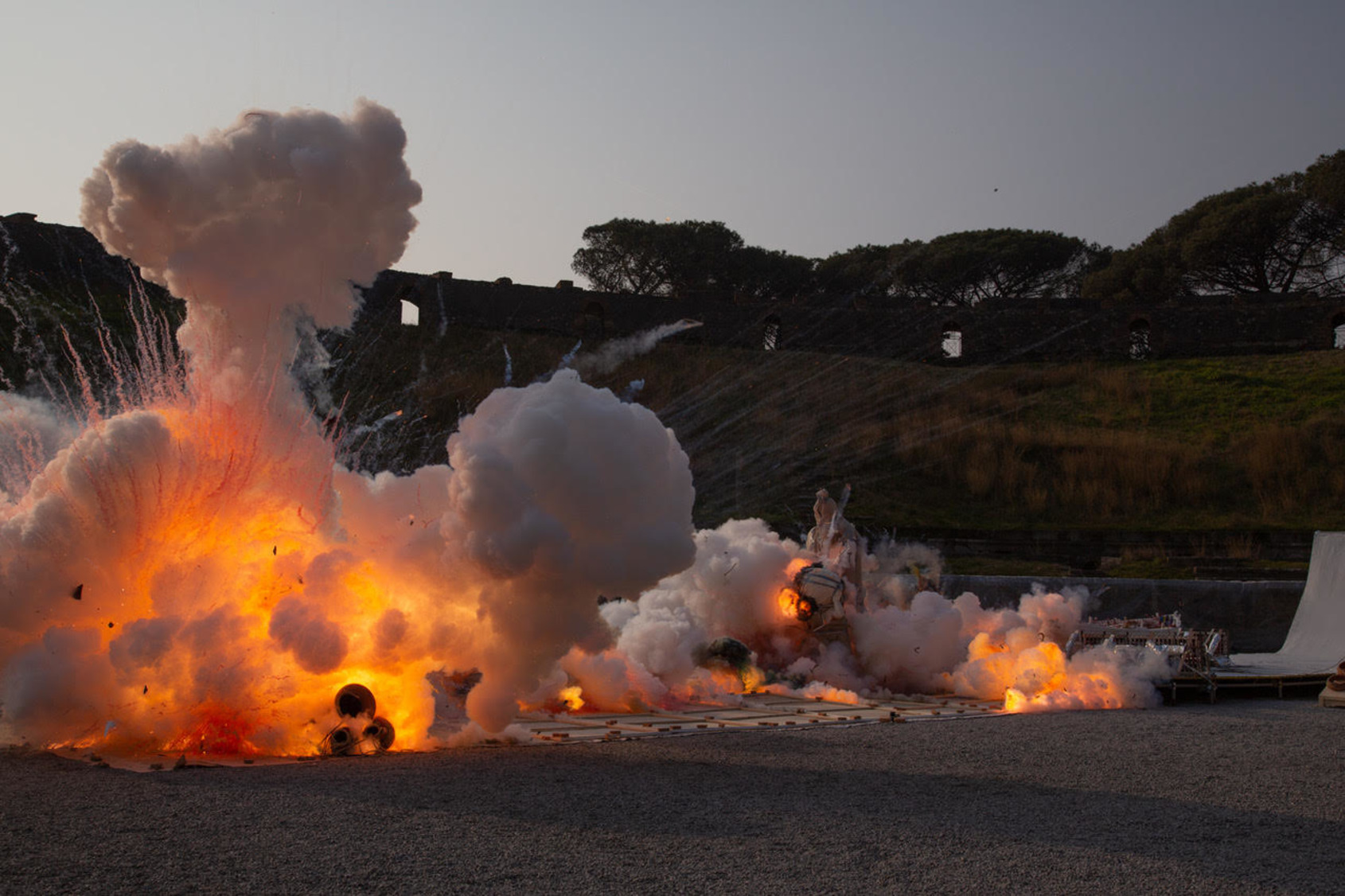
Rights reserved
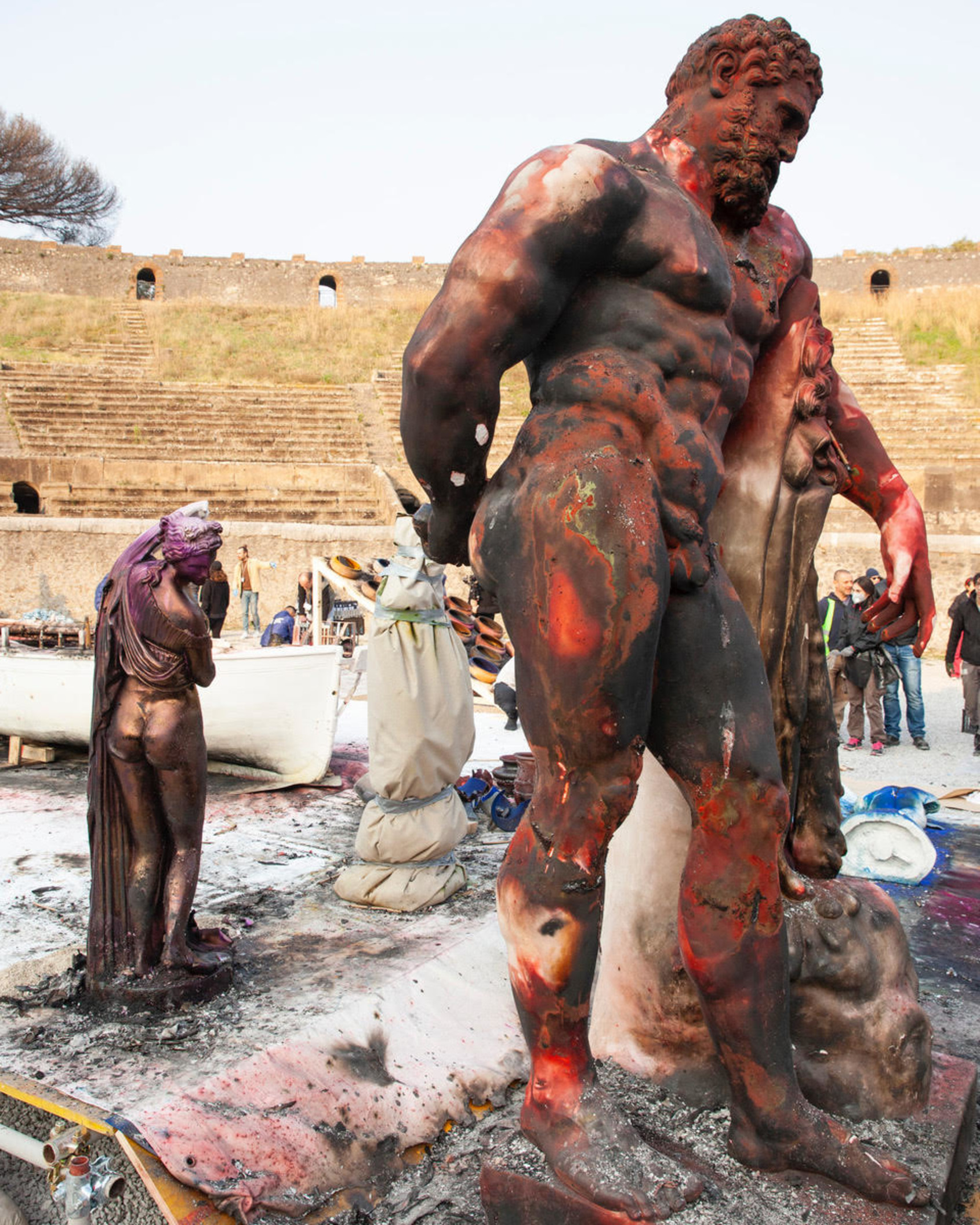
Rights reserved
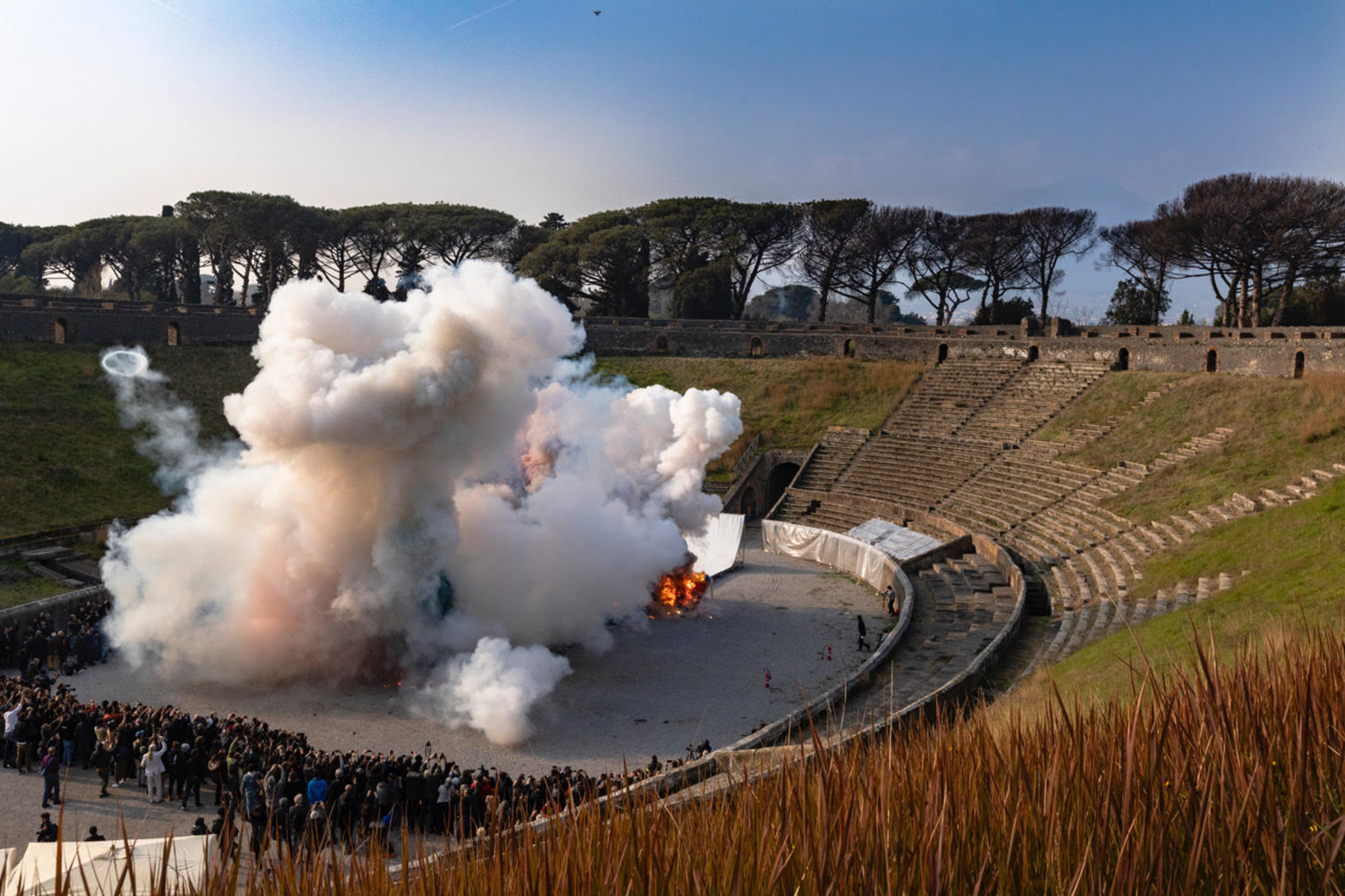
Rights reserved
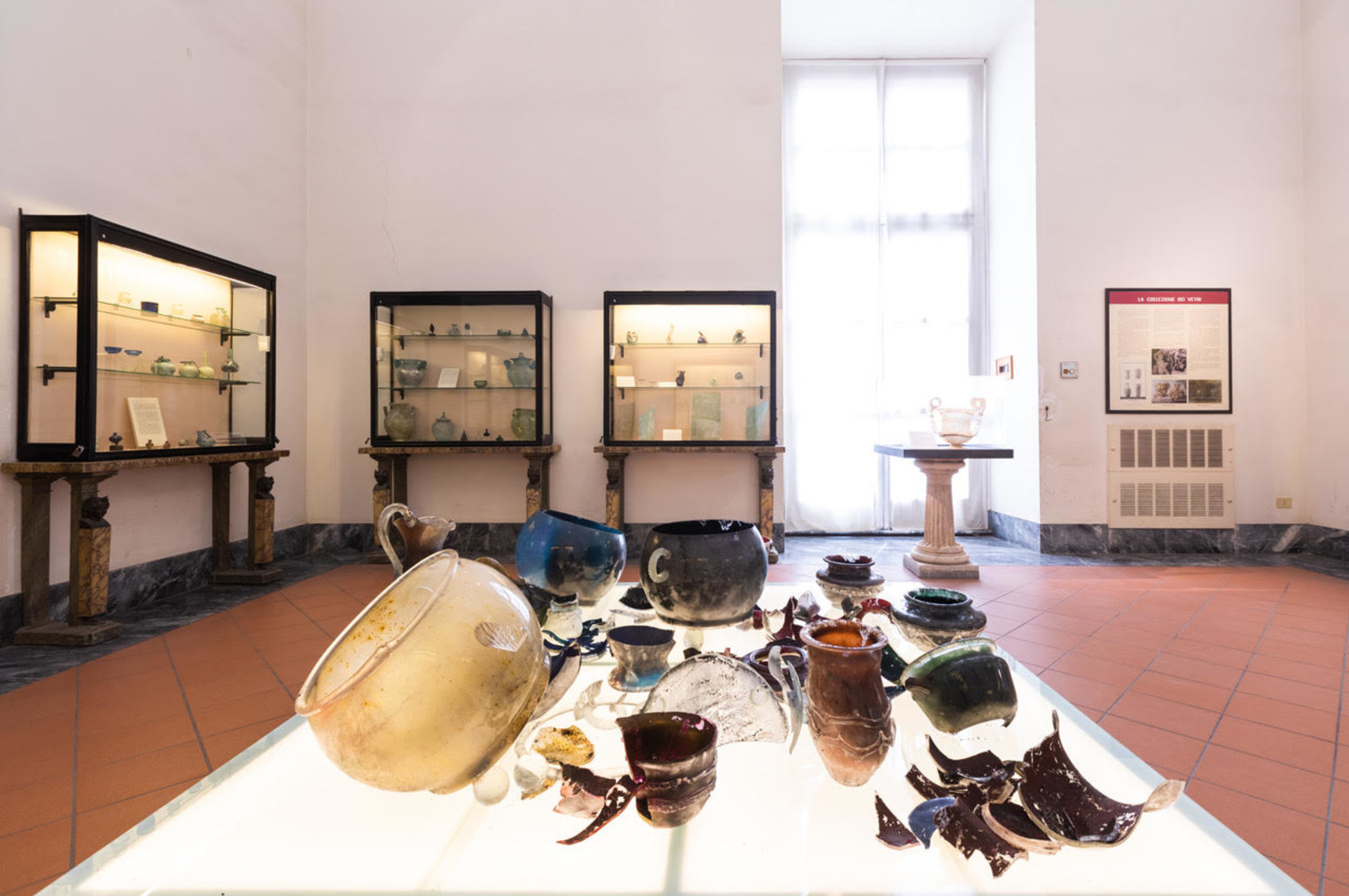
Rights reserved
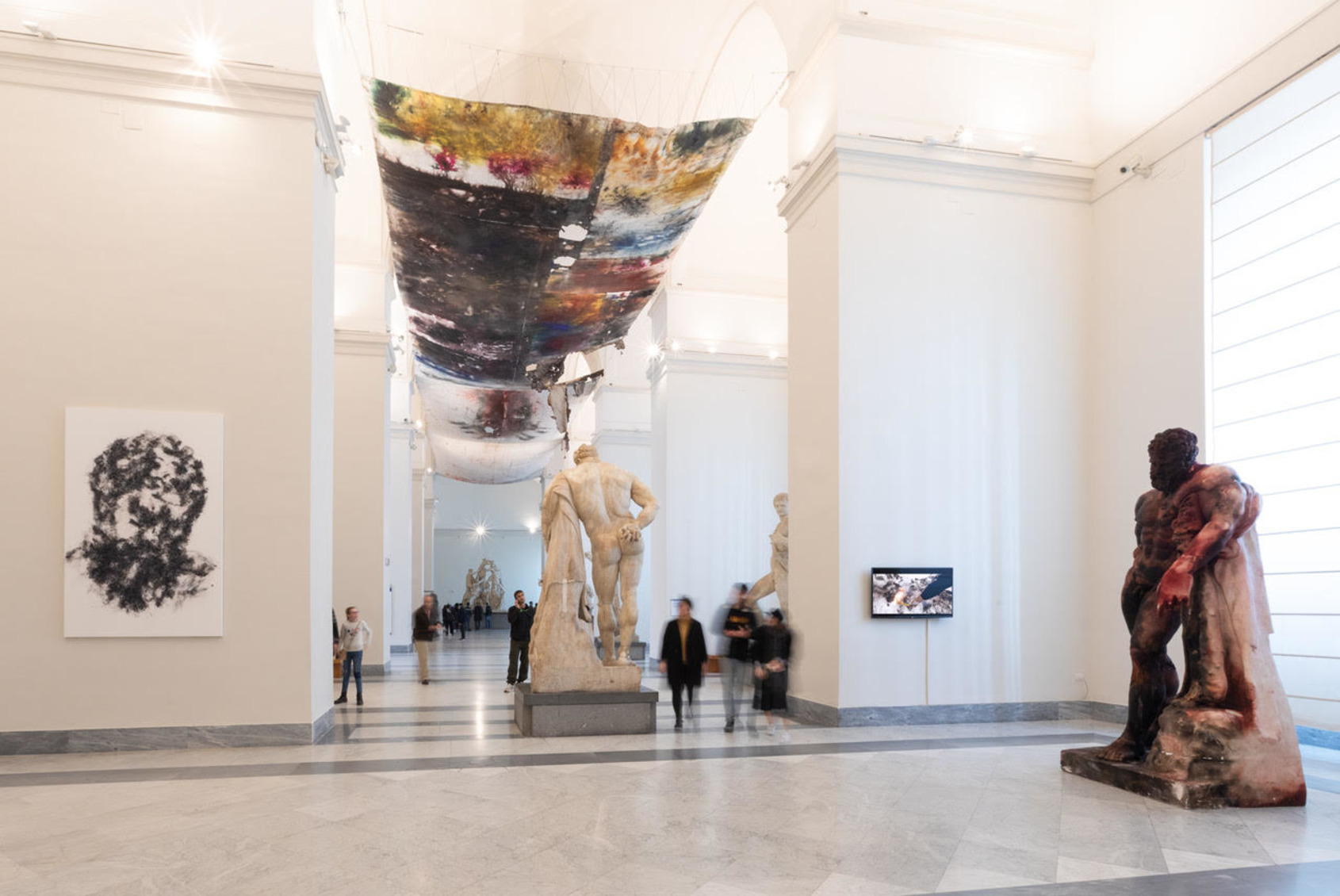
Rights reserved
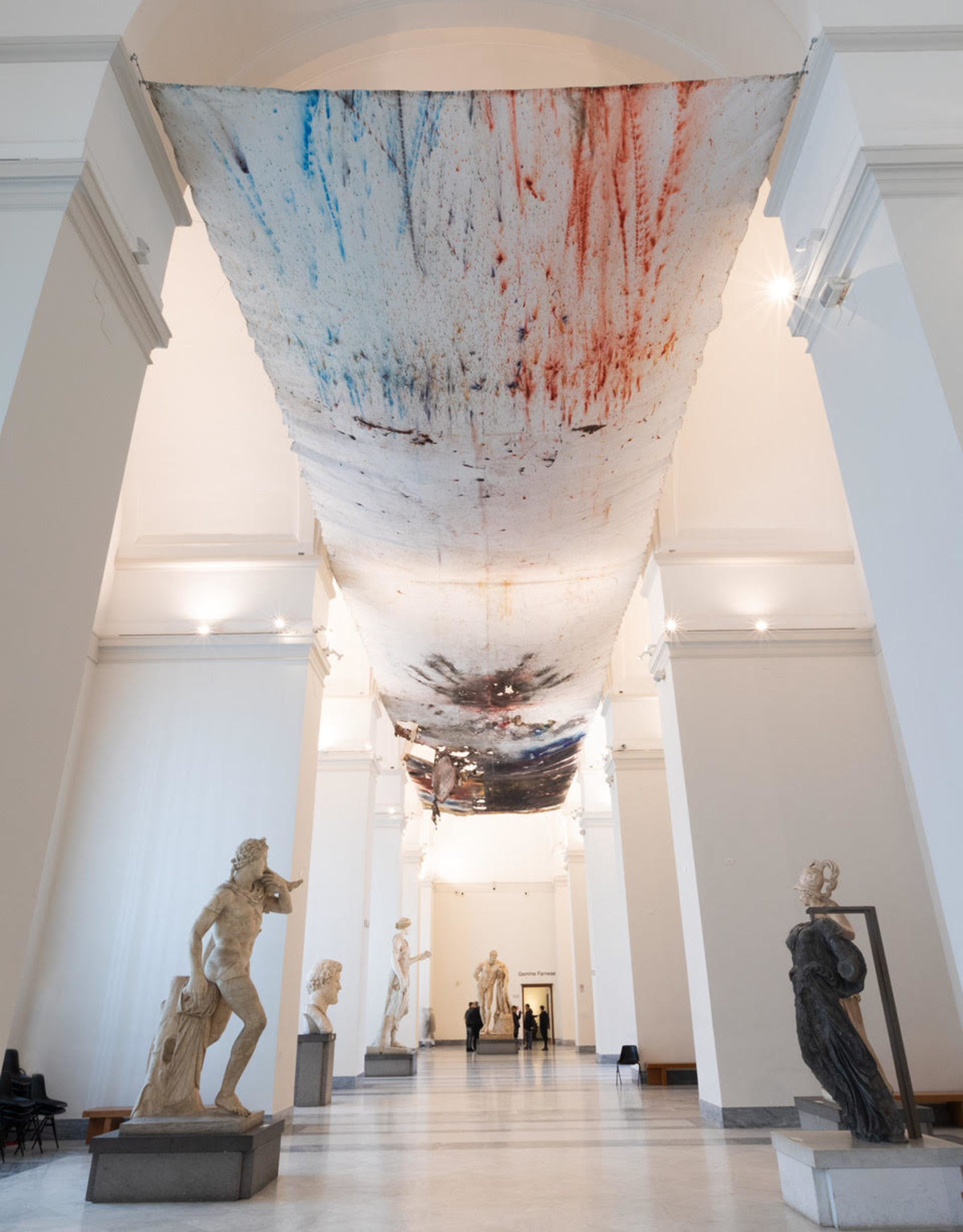
Rights reserved
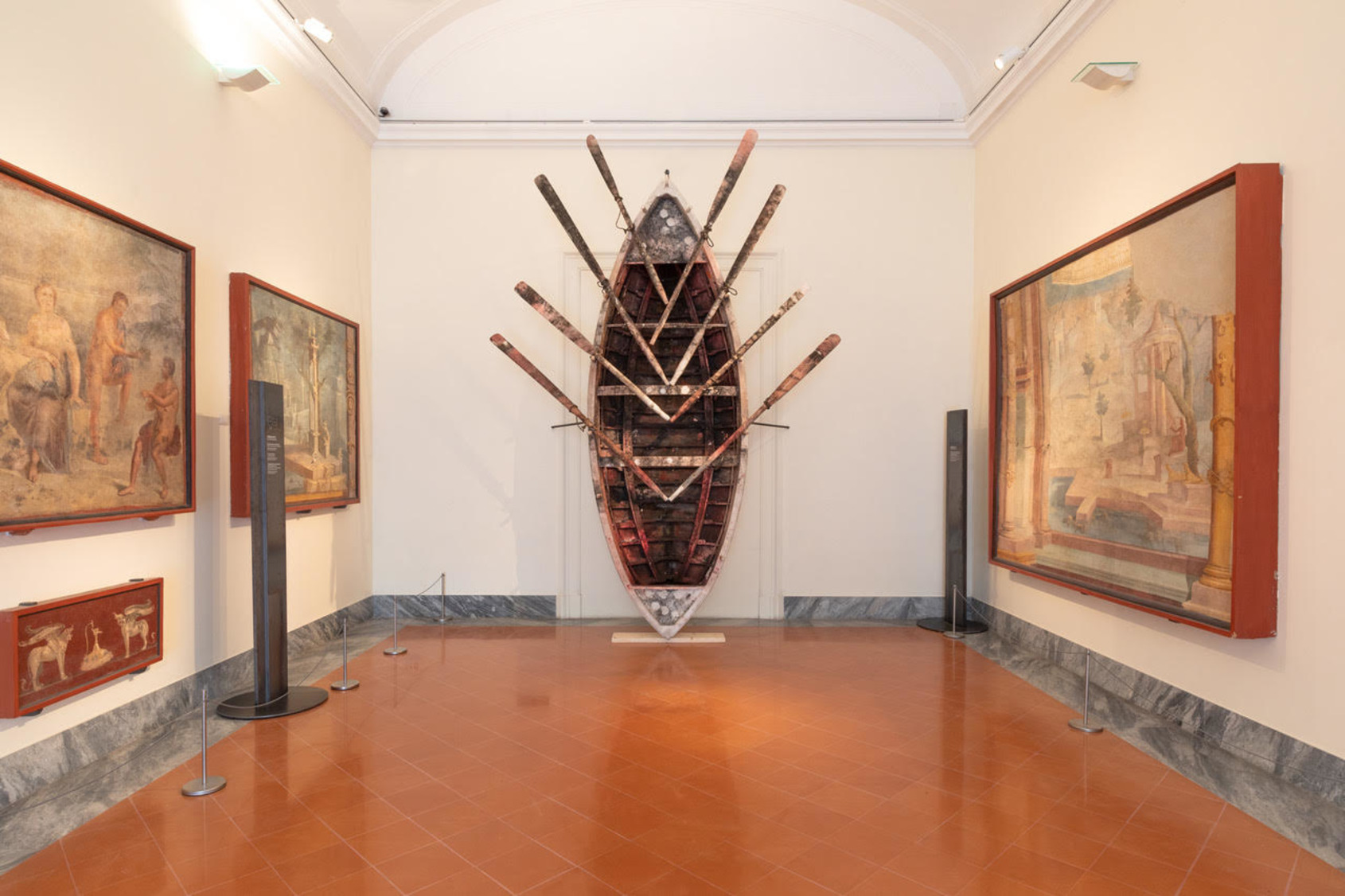
Rights reserved